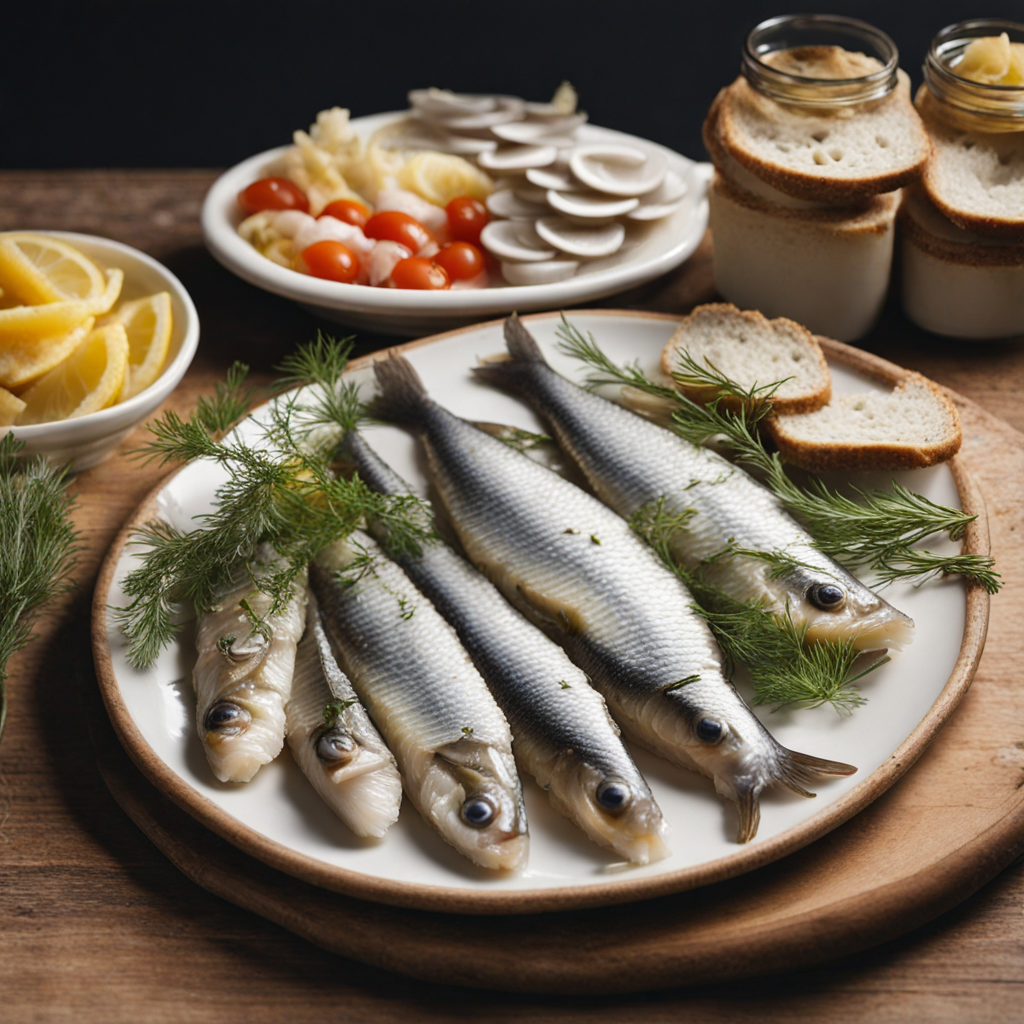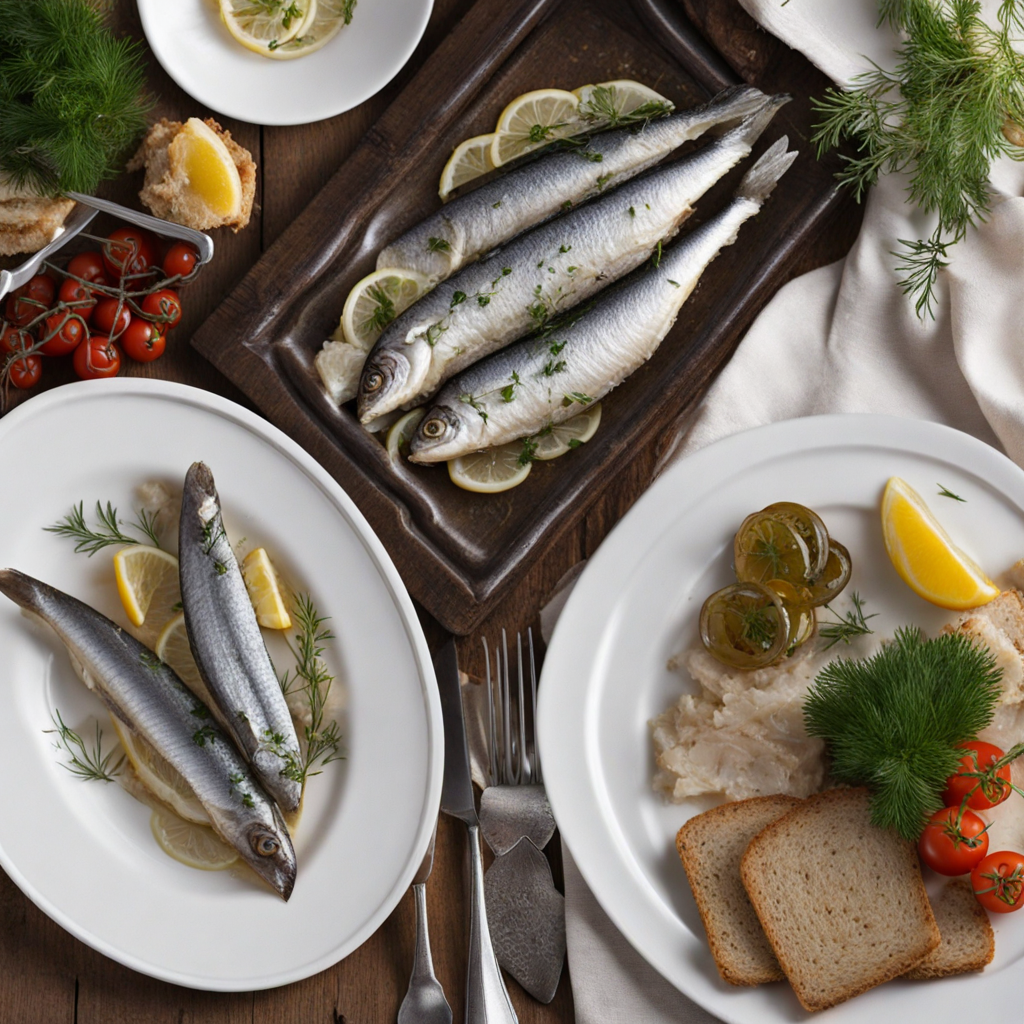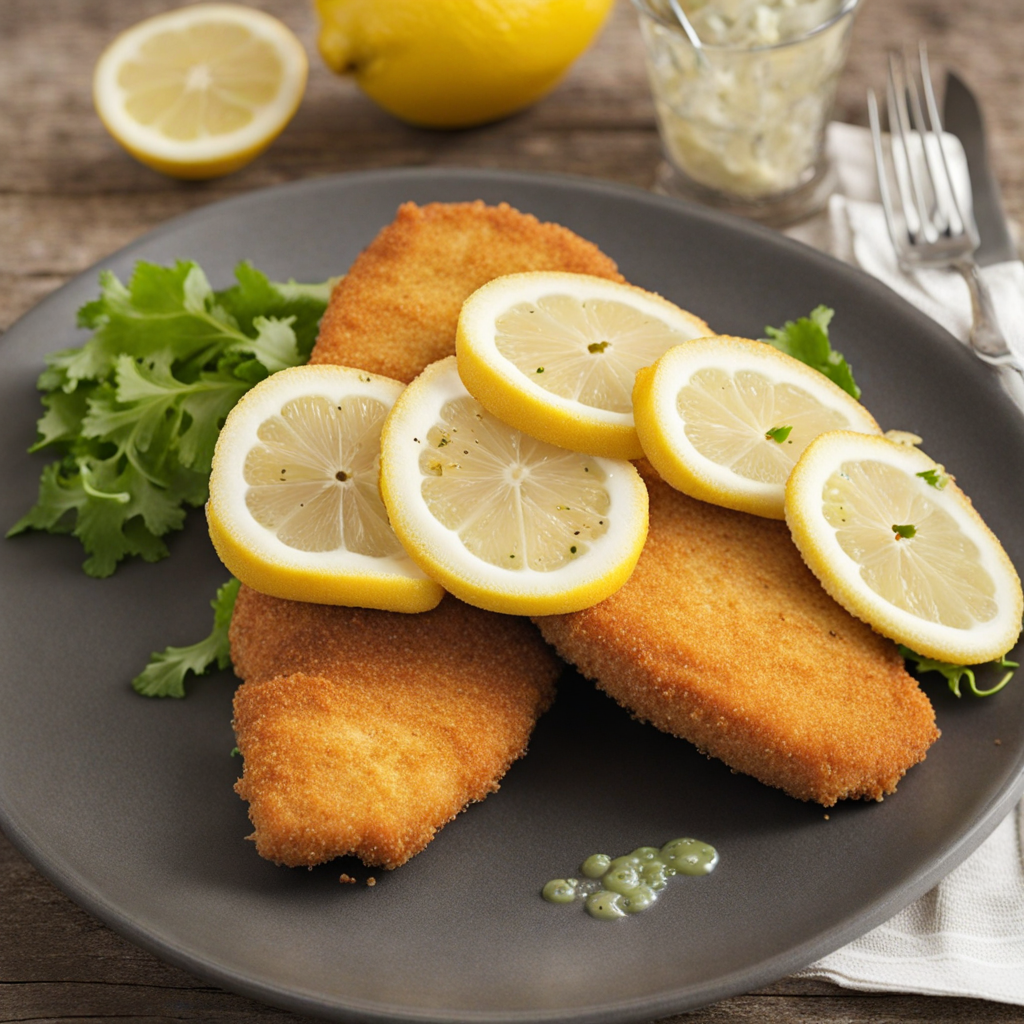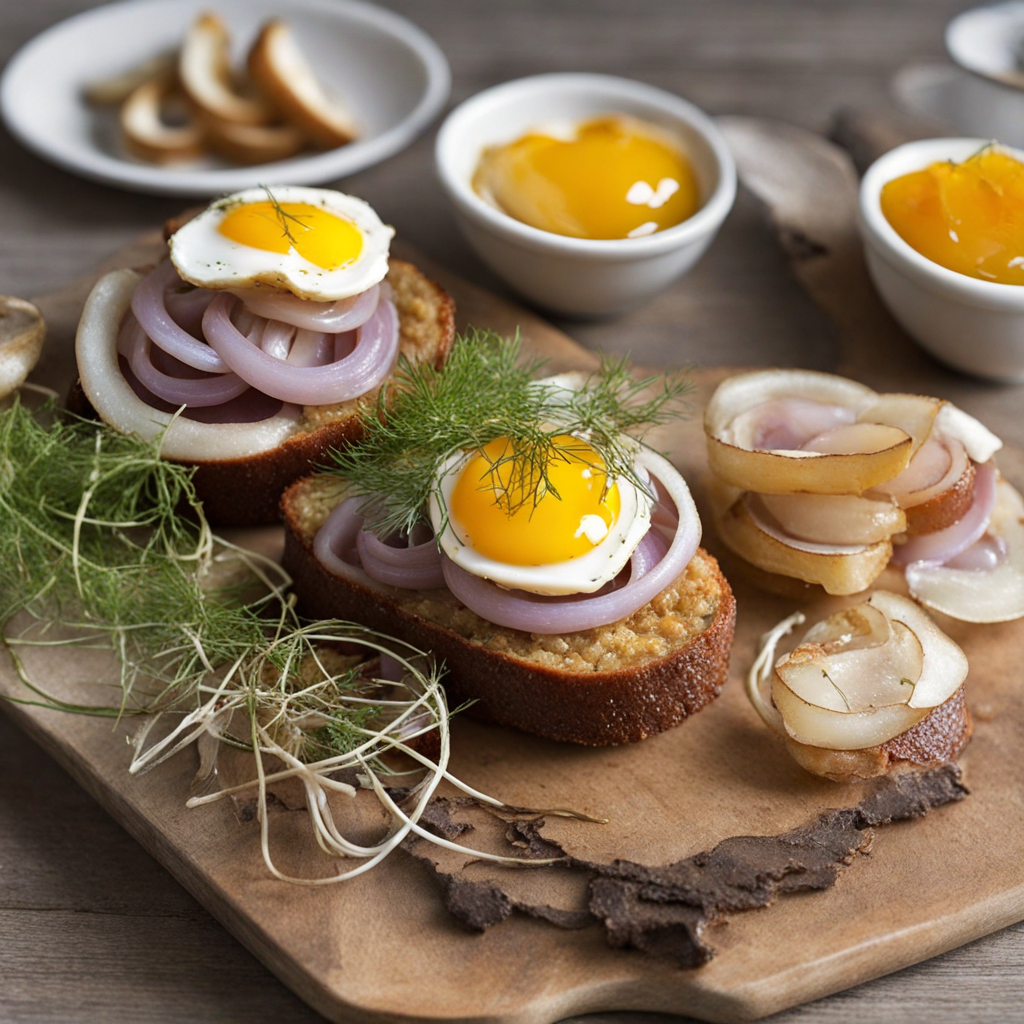Sild
Sild is a traditional Danish dish that showcases the country's maritime heritage, primarily featuring herring. This beloved fish is typically pickled or cured, resulting in a vibrant array of flavors that both tantalize the taste buds and evoke a sense of the sea. The preparation of Sild often incorporates a variety of spices and seasonings such as vinegar, dill, and mustard, which enhance the fish's natural brininess while adding depth and complexity to the overall taste. The result is a dish that is both tangy and savory, with a pleasing texture that can range from firm to tender depending on the method of preparation. In Denmark, Sild is often served as part of a traditional smørrebrød, an open-faced sandwich that features a slice of rye bread topped with an assortment of ingredients. The herring can be paired with various garnishes, such as thinly sliced onions, capers, and boiled eggs, creating a beautiful presentation that is as appealing to the eyes as it is to the palate. The combination of flavors and textures makes each bite a delightful experience, inviting food lovers to explore the harmonious interplay of salty, sweet, and sour notes. Sild is not just a dish; it embodies the Danish way of life, where simplicity meets craftsmanship. It is often enjoyed during festive occasions, family gatherings, or simply as a part of everyday meals, reflecting the Danes' appreciation for seasonal and locally sourced ingredients. For those seeking to broaden their culinary horizons, Sild offers an opportunity to indulge in a unique taste that is deeply rooted in Danish culture, promising a memorable gastronomic adventure.
How It Became This Dish
The History of Sild: A Danish Culinary Treasure Sild, or herring, is a quintessential element of Danish cuisine, deeply intertwined with the country’s maritime culture, historical trade practices, and agrarian lifestyles. This small, oily fish has played a significant role in Denmark’s culinary landscape for centuries, serving not only as a staple food source but also as a symbol of resilience and adaptability in a nation shaped by its relationship with the sea. #### Origins: The Bounty of the Sea The history of sild can be traced back to the early medieval period when Denmark was a burgeoning maritime power. Herring, abundant in the North Atlantic and the Baltic Sea, became a vital resource for coastal communities. Archaeological evidence suggests that herring was consumed as early as the Viking Age (circa 800-1050 AD), with remains found in ancient settlements along Denmark’s coast. The fish was not only a primary food source but also a means of trade, as the Vikings ventured far and wide, sharing their culinary practices along with their goods. Herring's oily flesh made it an excellent source of sustenance, particularly during the long, harsh winters when other food sources dwindled. This characteristic also led to the development of preservation techniques, allowing communities to stockpile fish for leaner months. Salting and smoking became common practices, enabling herring to be stored for extended periods. This preservation technique laid the groundwork for sild’s evolution into a staple food, especially among the lower classes who relied on affordable and accessible protein. #### Cultural Significance: A Symbol of Danish Identity As Denmark evolved, so too did the cultural significance of sild. The fish became emblematic of Danish identity, celebrated as a hallmark of the nation’s culinary heritage. Herring is often featured in traditional Danish meals, particularly during festive occasions and holiday gatherings. The custom of serving pickled herring at Christmas, for instance, showcases not only its enduring popularity but also its role in family traditions and communal celebrations. One of the most notable ways sild has been incorporated into Danish culture is through the phenomenon of “sildemadder,” or herring sandwiches. These open-faced sandwiches—typically served on rye bread and topped with various accompaniments—have become a staple of Danish cuisine. The art of preparing and presenting sildemadder has evolved into a culinary tradition of its own, with chefs experimenting with different flavors, toppings, and presentations, celebrating the versatility of this humble fish. #### Development Over Time: From Peasant Food to Gourmet Delicacy Throughout the 19th and 20th centuries, the status of sild evolved considerably. The Industrial Revolution brought about advancements in fishing and preservation techniques, allowing for mass production and distribution of herring. This period saw the rise of commercial fishing operations and the establishment of herring canneries, which transformed sild from a local staple into an export commodity. Denmark became a leading exporter of herring, with the fish finding its way to markets across Europe and beyond. Despite its newfound commercial success, sild remained a food closely associated with the working class. It was an economical source of nutrition for fishermen and farmers alike, often served in simple preparations that highlighted its natural flavors. However, as culinary trends shifted in the late 20th century, chefs began to reimagine herring in more sophisticated ways, elevating it from humble peasant food to a gourmet delicacy. The revival of traditional recipes and the exploration of new flavor profiles led to the emergence of “new Nordic cuisine,” a movement that emphasizes local, seasonal ingredients and traditional cooking methods. Herring became a focal point in this culinary renaissance, with chefs incorporating it into contemporary dishes that honor its rich history while appealing to modern palates. This fusion of tradition and innovation has helped sild maintain its relevance in Danish cuisine, ensuring that it remains a beloved ingredient in both home kitchens and fine dining establishments. #### Sild in Contemporary Denmark: A Culinary Staple Today, sild continues to be a cherished food in Denmark, celebrated for its versatility and flavor. The fish is available in various forms—pickled, smoked, marinated, or served fresh—and is often featured in traditional dishes as well as contemporary culinary creations. Danish restaurants proudly showcase sild on their menus, often accompanied by locally sourced ingredients that highlight the fish's natural qualities. Festivals and food markets frequently celebrate herring, drawing attention to its cultural significance and the artisanal methods of preparation. Events like the annual Herring Festival in the coastal town of Nykøbing Mors highlight the importance of herring in the local economy and culinary heritage, fostering a sense of community and pride in Denmark’s maritime traditions. Moreover, the environmental sustainability of herring fishing has become a pivotal topic in recent years. With growing awareness of overfishing and the need for sustainable practices, Danish fishermen are increasingly adopting responsible fishing methods to ensure the longevity of herring stocks. This commitment not only secures the future of sild as a culinary staple but also reinforces its role as a symbol of Denmark’s relationship with the sea and its resources. #### Conclusion: The Enduring Legacy of Sild Sild is more than just a fish; it is a cultural icon that embodies Denmark's rich maritime history and culinary traditions. From its origins as a vital food source in the Viking Age to its contemporary status as a gourmet delicacy, herring has continually adapted to the changing tides of Danish society. Through its various preparations and cultural significance, sild has woven itself into the very fabric of Danish identity. As Denmark continues to navigate the complexities of modern cuisine and sustainability, sild stands as a testament to the enduring connection between food, culture, and history. Its journey from humble beginnings to celebrated status reflects the resilience of a nation that has thrived on the bounty of the sea, ensuring that this treasured fish will remain a cornerstone of Danish culinary heritage for generations to come.
You may like
Discover local flavors from Denmark







